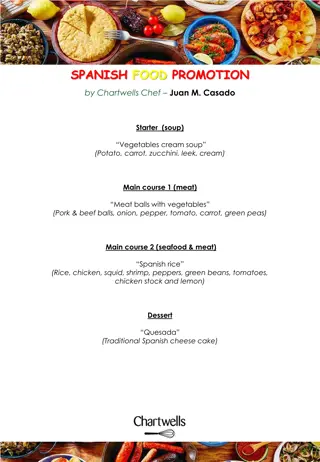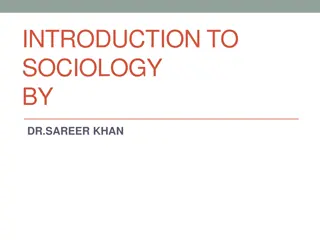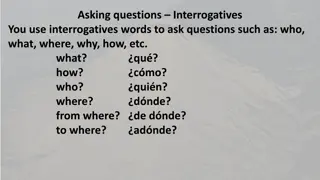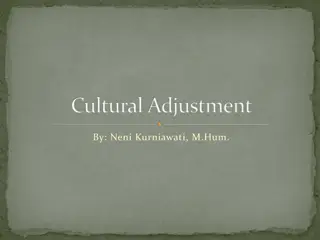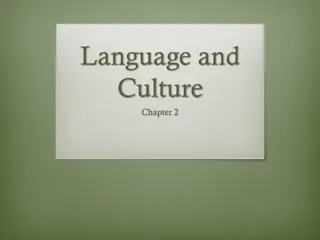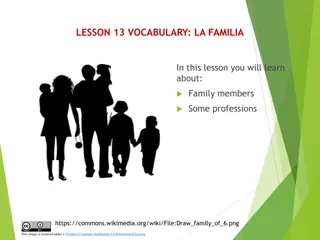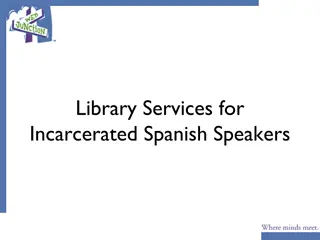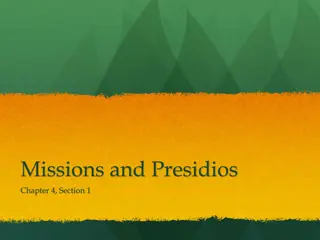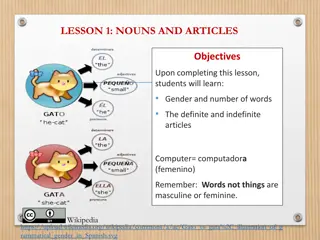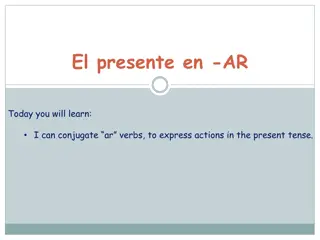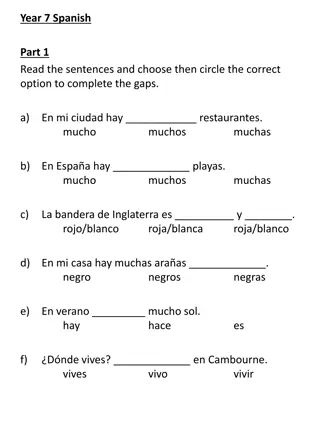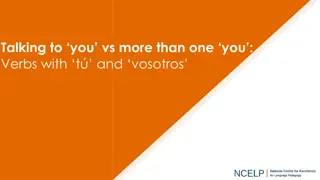Exploring AP Spanish Language and Culture: What to Expect and Is It Worth It?
This guide provides insights into AP Spanish Language and Culture, focusing on communication skills, exam pass rates, workload, and the course's value. Discover what to expect, the emphasis on communication skills, exam pass rates, workload breakdown, and whether AP Spanish Language is a worthwhile pursuit. Explore the benefits of taking this course for proficiency in the Spanish language and potential college credit.
Download Presentation

Please find below an Image/Link to download the presentation.
The content on the website is provided AS IS for your information and personal use only. It may not be sold, licensed, or shared on other websites without obtaining consent from the author. Download presentation by click this link. If you encounter any issues during the download, it is possible that the publisher has removed the file from their server.
E N D
Presentation Transcript
A.P Spanish Language and Culture Mrs. Megan Vieceli mvieceli@bbchs.org
Welcome You or your child are probably thinking about taking AP Spanish Language and Culture, but have some reservations because you're not sure about what exactly it will entail. Don't worry! This guide will hopefully help provide you with some of the information that will help you decide whether AP Spanish Language and Culture is the right fit for you!
What to Expect AP Spanish Language and Culture focuses primarily on developing your ability to communicate with others in Spanish, developing writing skills, advanced sentence structure, and increased reading and speaking ability. Grammar and memorizing vocab is not the focus of AP Spanish.
Pass Rates As you can see from the chart, the AP Spanish Language and Culture exam has a 90% pass rate, with over a quarter of students earning a 5. Any personal goals you set for yourself are achievable.
Workload There are two main components that we focus on in AP: developing exam skills and learning the culture. In a typical week, we Read 2-3 short stories Answer multiple choice and short answer comprehension questions Have class discussions about the themes and readings, both opinion based and factual Listen to an audio file and answer comprehension questions Review an old grammar or vocabulary concept Practice one of the free-response types of questions from the AP test
Is AP Spanish Language Worth It? : If you enjoy the Spanish language, this course is a great way for Knowledge/Interest you to transition into actually using Spanish in a more real-world context, by learning how to use it in correspondence, essays, conversation, and presentation. : This course could fulfill the foreign language requirement if your prospective Credit college has that requirement so definitely look into it if you are looking to not take a language class in college or want to place into a higher-level course to continue studying Spanish as a major or minor. : In many cases, the AP exam can be used to show that Demonstrating Proficiency you have a mastery of the Spanish language. So, if you want something tangible to demonstrate that you have a command of the language, whether you are native or learning it, this could be the class for you!
Sample theme Unit 1 dives into the various themes related to families in the Spanish- speaking world. Some major questions we will consider are: What constitutes a family in Spanish-speaking societies? / Qu compone una familia en una sociedad hispanohablante? What are some important aspects of family values and family life in Spanish-speaking societies? / Cu les son algunos aspectos importantes de los valores y la vida familiar en las sociedades hispanohablantes? What challenges do families face in today's world? / Qu retos enfrentan las familias de hoy?
Cultural Focus The multigenerational family has been historically common in many Hispanic countries. The ancient custom of forming small tribes with the same family ties has morphed through time to small villages of where everyone knows everyone and cares for each other. In Mexico, for example, multigenerational families sharing one household also formed out of necessity due to economic factors and a sense of familismo.
Questions? Mrs. Vieceli AP Spanish Language and Culture mvieceli@bbchs.org (815) 937-3707 ext.6307




